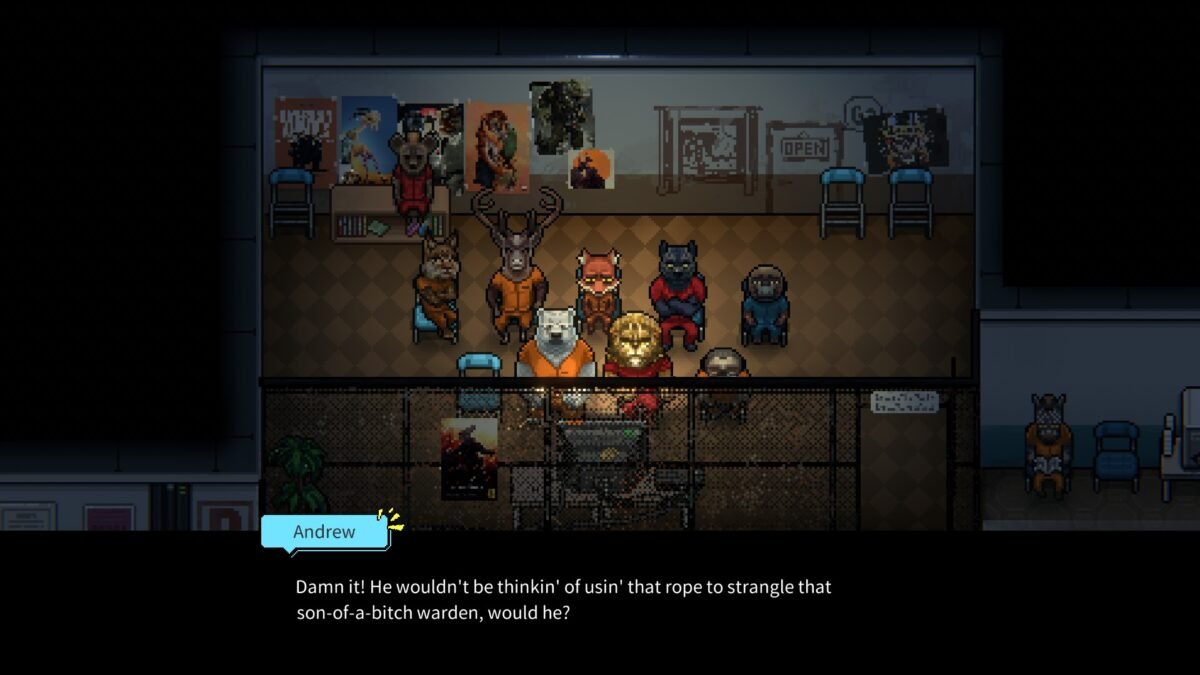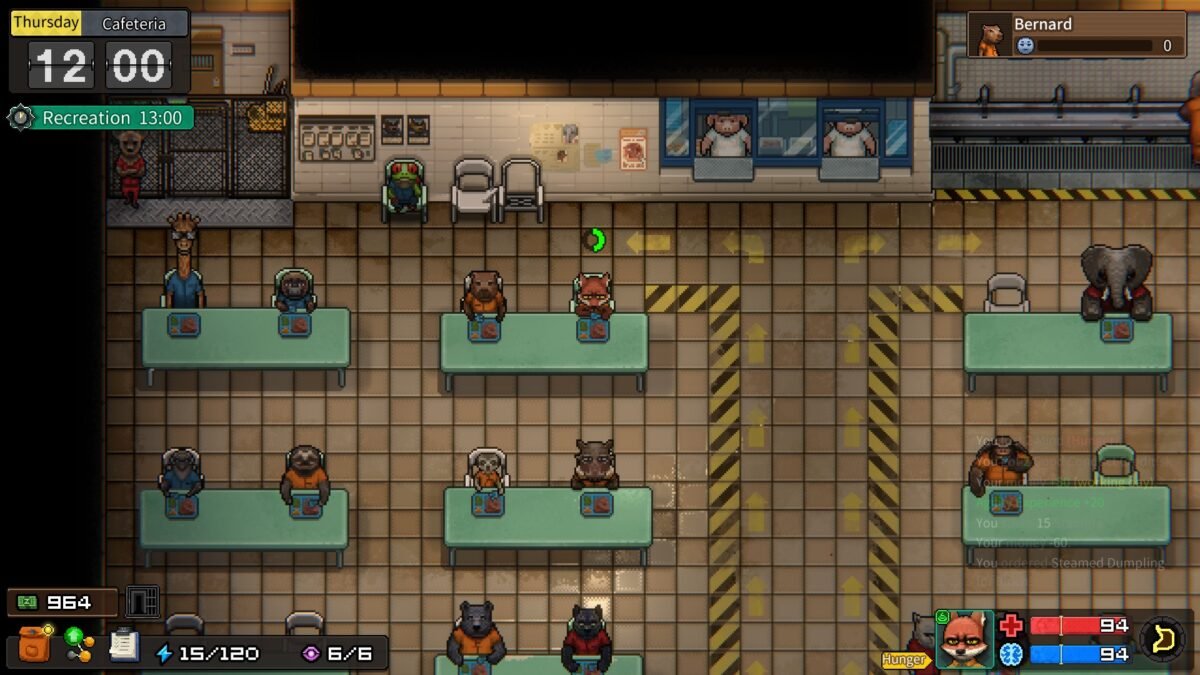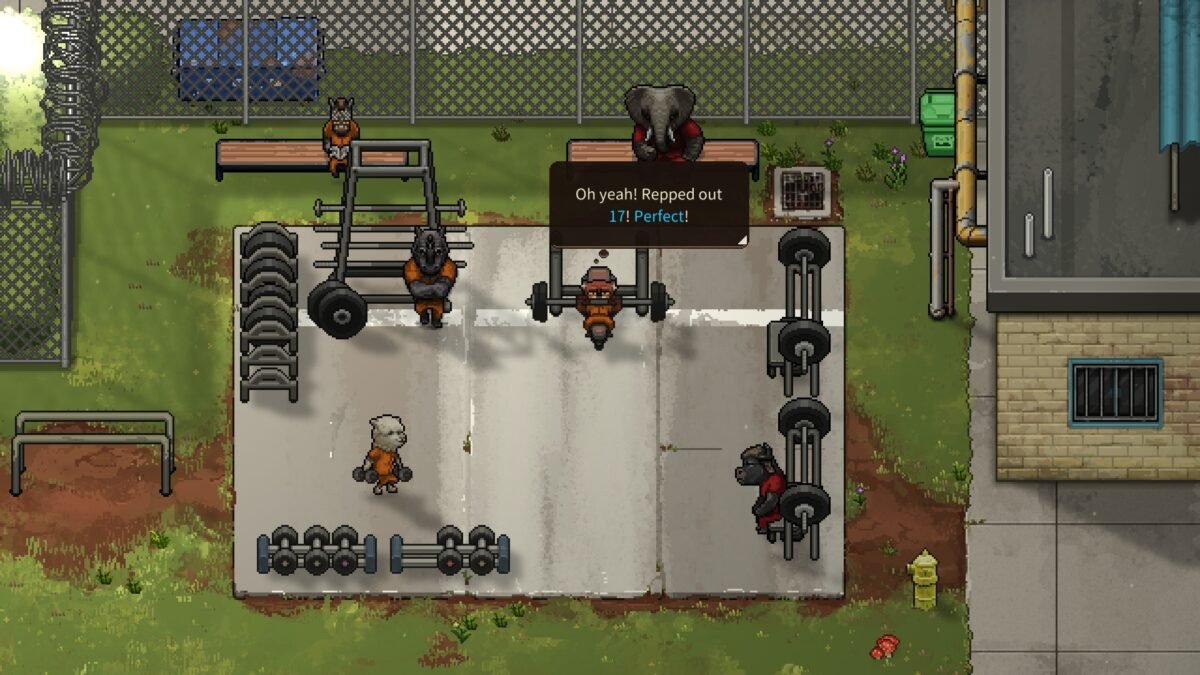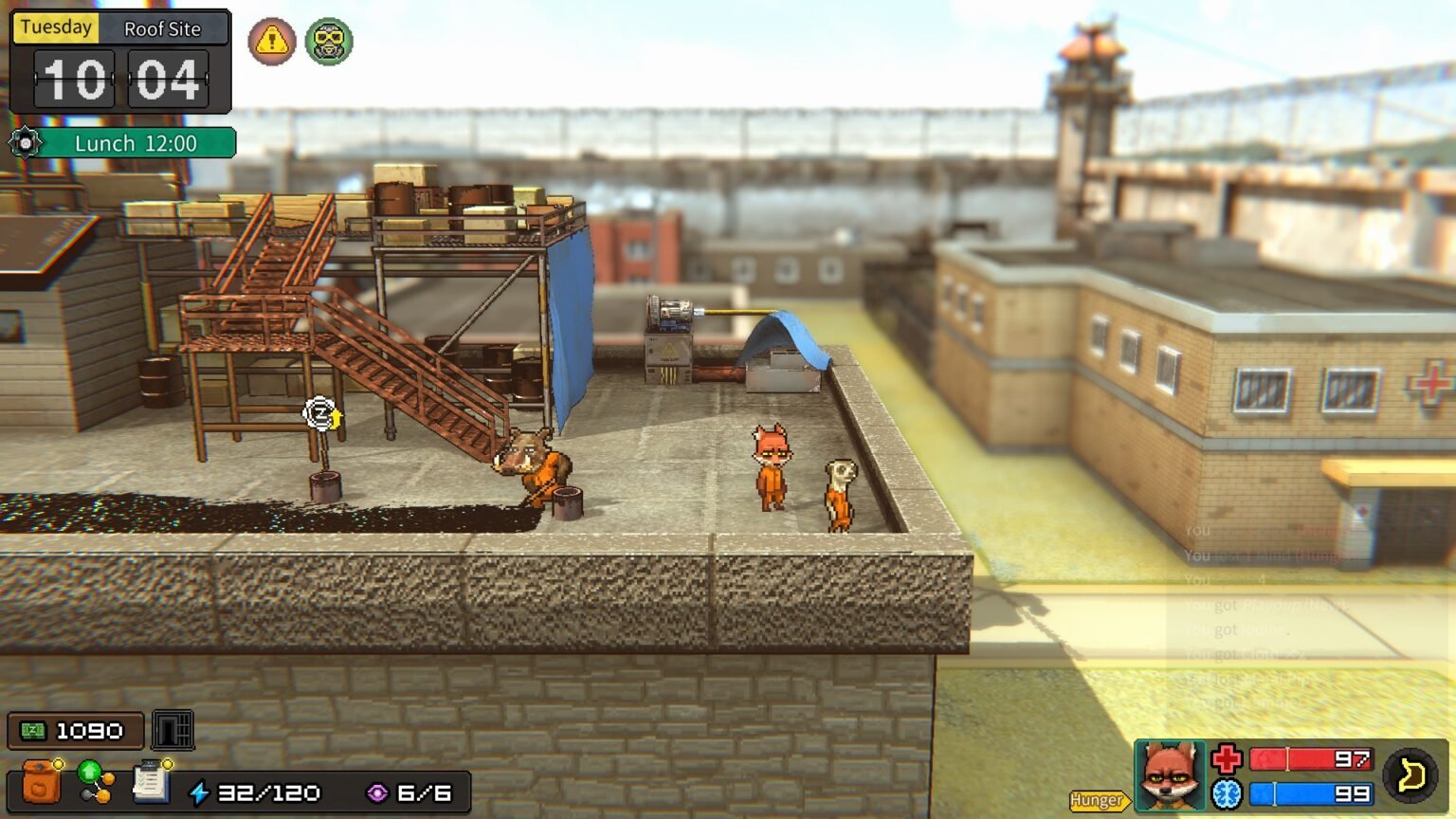Back to the Dawn might have the appearance of a simplistic RPG on its surface, but it has a layer of complex game designs all working simultaneously, which creates a memorable experience almost every second of the game. All the game systems flow smoothly and add significant value to the gameplay and narrative. Here is our review of Back to the Dawn.
You are Not the Only One

When I first booted the game, I had to make a decision between Thomas the Fox and Bob the Panther as the main character. I immediately went for the fox as a playable character, as I wanted to relive the first few hours of The Shawshank Redemption. Even with the pixelated graphics, Back to the Dawn excellently created the dread atmosphere of prison almost immediately. The first day in prison was the worst and best experience the game offered, as I witnessed a promising journalist, who was dealt a rough hand in life, and now ended up in a cell fighting off hunger and depression.
The very first day, you are all alone in prison, getting introduced to its law and being told that breaking any of them will result in spending days in solitary confinement. Talking to NPCs and befriending them is the only way to keep your sanity in prison. When you strike up a conversation with the tiger, it’s all alone and distant; the same can’t be said about talking to a lemur, a beaver, or a turtle. Each animal is equipped with their own dialogue, even without the voice acting, it feels genuine to the characters.
Your Fate Is in Your Hands

Prison is a time of reflection. Back to the Dawn managed to capture the essence, as I was given the option to work towards finding the real culprits behind my prison sentence or fix the broken relationship with my ex via phone.
Just like the Water Chip in Fallout 1, the game can be so immersive that breaking out of the beaten path doesn’t feel like a bad idea. I did glance at the quest objective screen to proceed to the next phase, but I often found myself lost making friends with gang members to get perks, or dealing with interesting NPCs to reveal their secrets.
You can join the gang to better your survival or butter up the guards to get more prison privileges; the game presents the options and leaves the decision to the player without making it urgent.
Prison Simulator

The game juggles so many interesting ideas without putting one above the other. In prison, I did make money working at four different jobs, feeding myself with four different foods, stealing from other inmates, extorting from them, being friendly with them, betraying gang leaders, working with guards, working with other gangs, taking part in boxing matches, and many more. All these ideas are not just window dressing; they are all critical and have consequences and perks.
All of the activities are linked together, and they flow smoothly from one scene to another. If I skipped prison work, then I would have little to no wage for food during lunchtime, which means I would have to drink hot water or get bread to fill my growling stomach. At the end of that day, I’m hitting the sack with a hungry stomach and a broken mind because I didn’t decide to work that day.
Introduction of new mechanics is very player-reliant, with little to no handholding. I went most of the game without ever stepping into the kitchen, since laundry work generated plenty of money. But the option to work in the kitchen was present. However, later on, when I did explore that part of the prison, it delighted me when I stumbled upon one of the rarer items in the game there.
Every new room that I unlocked had a level of secrecy that was inaccessible from the start. Here, the game teased me to hunt for clues to see the room behind the inaccessible door. The game also promotes exploration by giving you unique goodies inside the containers. One of the game’s expensive items was packs of ramen noodles. You have to gain a lot of trust with inmates to get it for a hefty amount of cash, but when I was out exploring the Prison’s Kitchen, I found the item instantly. Exploration always led to mundane to unique rewards that were worth getting bleeding hands.
Conclusion
9.5/10
What Works:
- Respect for Player Choices
- Very Strong Narrative
- Rewarding mini games and gameplay options
- Cast of interesting personalities
- Decent RPG mechanics
What didn’t:
- Sometimes music can feel out of place.
Back to the Dawn is a well-made RPG game about a prison break, but with heavy emphasis on the player’s decisions. The game respects the player’s decision and molds the game to your choices and creating consequences later down the road. With multiple different endings, creating many different scenarios, Back to the Dawn does tell a story, but you are the one writing on the paper.


